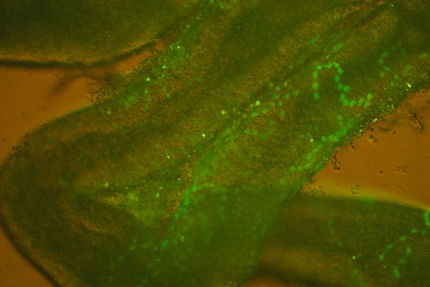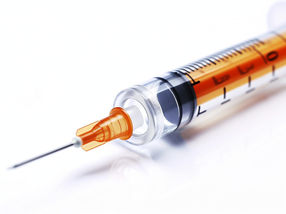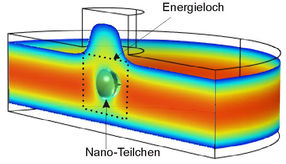Remote Control
Microcapsules enter cells and an external flash of light triggers release of their contents
Advertisement
Pharmacologists dream of being able to deliver a drug directly to its target location within a cell. This would make it possible to avoid many of the undesired side effects of medications. The dosage could also be reduced and adjusted more precisely to the needs of the diseased cell. Microcapsules are one possible tool for such a strategy; the cavities of these single- or multilayer spheres of suitable polymers can be filled with drugs for delivery. Then the microcapsules need only be introduced into cells and their contents released in a controlled fashion.
One way this might work has been examined by the research groups of André Skirtach in Potsdam and Wolfgang Parak in Munich. They prepared multilayer microcapsules with a diameter of about 4.5 µm. If these microcapsules are heated in the presence of a fluorescence dye, they absorb it. At the same time, the capsules become stronger and more stable and shrink to about 3 µm.
The researchers incorporated silver and gold nanoparticles into the shells of the capsules. These act as absorption centers for light so that a laser pulse can be used to break apart the capsules and release their contents.
In the next step, the cells must be taken up by living cells. This is fairly simple to accomplish by incubating a cell culture with the capsules over several hours. The authors used a tumor cell line for this. Careful selection of the external conditions ensures each cell takes up only one capsule. When a laser pulse is then beamed at the cells from the outside, the capsules release their fluorescent contents into the interior of the cells.
Unincorporated capsules that remain outside of the cells do not interfere; they remain unaffected and intact.
Most read news
Topics
Organizations
Other news from the department science

Get the life science industry in your inbox
By submitting this form you agree that LUMITOS AG will send you the newsletter(s) selected above by email. Your data will not be passed on to third parties. Your data will be stored and processed in accordance with our data protection regulations. LUMITOS may contact you by email for the purpose of advertising or market and opinion surveys. You can revoke your consent at any time without giving reasons to LUMITOS AG, Ernst-Augustin-Str. 2, 12489 Berlin, Germany or by e-mail at revoke@lumitos.com with effect for the future. In addition, each email contains a link to unsubscribe from the corresponding newsletter.


























































